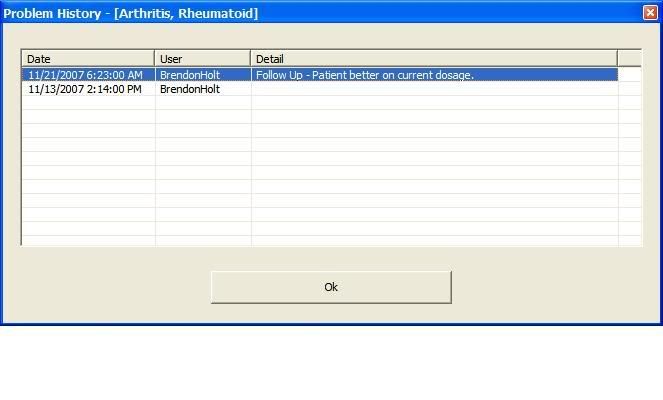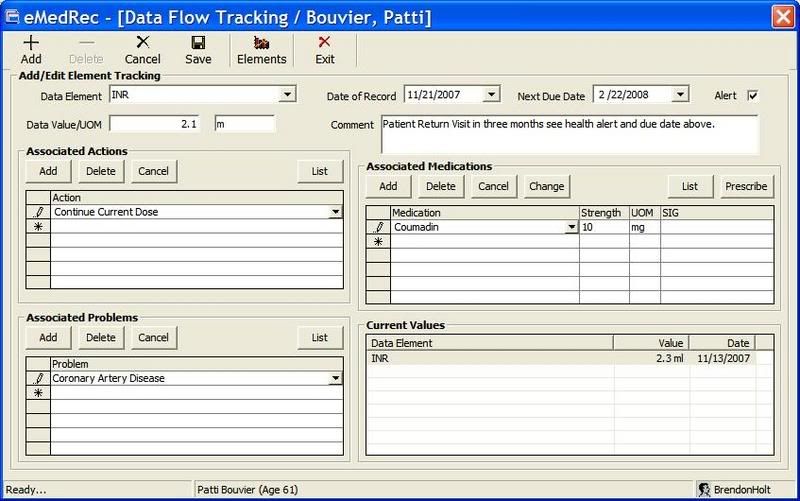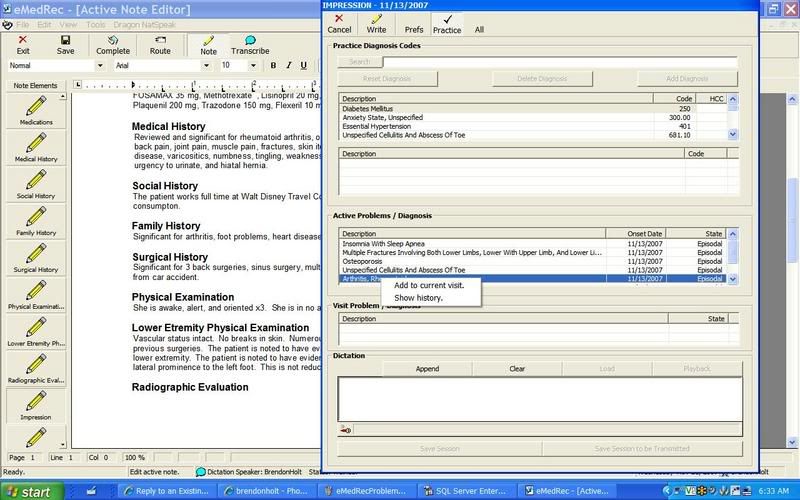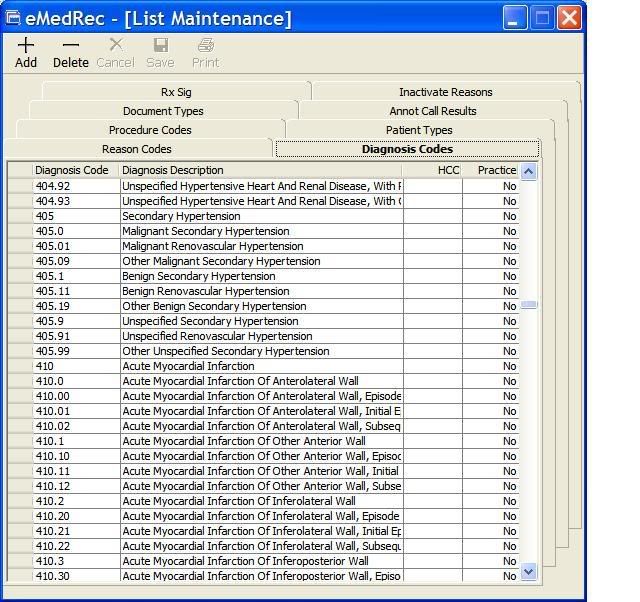Austin Merritt, Chief Operating Officer of Software Advice, feels that EMR companies are slow to develop an iPad strategy:
"The medical software industry is far from supporting the iPad on a meaningful scale."
"... only a handful of other vendors (most notably AllScripts and Quest) have released iPad apps to supplement existing EHR systems".
I personally have been using RDP on my iPhone and have found it to work great for my Windows applications. In fact, we've been developing our internal Windows based applications with iPhone and iPad in mind, using these applications via RDP is similar in ease of use as native iPhone/iPad apps.
Showing posts with label EMR. Show all posts
Showing posts with label EMR. Show all posts
Wednesday, January 26, 2011
Friday, January 8, 2010
Sunday, March 15, 2009
EMR and the Stimulus Bill
There are many opinions regarding the effects of a government subsidy for EMR adoption. As I blogged earlier, my fear is this may just end up promoting older technologies and "establishment" vendors, potentially preventing smaller, innovative players from entereing the market. There also implications for open source EMR community as well.
Austin Merritt has some interesting thoughts in his article, Get Ready for EHR Failures, But Don’t Blame the Software.
He expresses concern that a free or overly subsidized EMR will not lead to meaningful use by physicians since people tend not to value somthing they did not pay for. I generally agree with this premise. However, if the "free EMR" is trully indispensible to the physician in terms of efficiency, workflow, care quaility, and is easy to use, then it will not matter if the EMR is free- it will be adopted by phyicians.
Austin Merritt has some interesting thoughts in his article, Get Ready for EHR Failures, But Don’t Blame the Software.
He expresses concern that a free or overly subsidized EMR will not lead to meaningful use by physicians since people tend not to value somthing they did not pay for. I generally agree with this premise. However, if the "free EMR" is trully indispensible to the physician in terms of efficiency, workflow, care quaility, and is easy to use, then it will not matter if the EMR is free- it will be adopted by phyicians.
Tuesday, March 18, 2008
Misys Healthcare and Allscripts to Merge
I heard this rumor while at HIMSS, but both parties denied it. Well it happened. Supposedly, with this merger, 1 in 3 physicians will be working with an Allscripts-Misys system in some capacity. See Misys Healthcare and Allscripts to Merge.
Saturday, March 8, 2008
ROI of EMRs not worth the cost ?
Interesting piece in the AMA news. Blue Cross Blue Shield of MA (BCBSMA) has determined that the ROI of an EMR is not worth the investment to doctors, and as a result, will not require physicians to purchase an EMR in order to participate in their P4P programs. This news is especially significant since it was BCBSMA that funded the very high profile $50M community based EMR project, Massachusetts eHealth Collaborative. One objective of this project was to understand the cost and quality implications of implementing EMRs, so BCBS's conclusion is based on solid data. It will be interesting to see how this plays out in justifying future EMR roll outs.
Wednesday, November 21, 2007
Problem List Management in EMRs
Monday, November 5, 2007
Physicians Required to Implement an EMR
An interesting item on EMR and HIPAA regarding the decision by Partners Healthcare to require physicians in the network to have an EMR or else leave the network.
I would prefer if they let physicians buy their own EMRs and not have it subsidized. It will be interesting to see how things work out over the next 3-5 years. Technology is changing rapidly. Microsoft and Google are also getting more into healthcare. EMRs available today may appear ancient compared to the new crop of EMRs coming out over the next few years. Buying an EMR today compared to in a few years may be like buying a DOS based system to a Windows system.
I would prefer if they let physicians buy their own EMRs and not have it subsidized. It will be interesting to see how things work out over the next 3-5 years. Technology is changing rapidly. Microsoft and Google are also getting more into healthcare. EMRs available today may appear ancient compared to the new crop of EMRs coming out over the next few years. Buying an EMR today compared to in a few years may be like buying a DOS based system to a Windows system.
Thursday, October 11, 2007
Open Source EMR
I just came across some information on an open source EMR on the EMR Update site. The website is located here. Looks fairly interesting. There are a set of very basic screen shots which gives an idea to the look and feel, but also explains the thought process behind the user interface design.
The design of the UI is based on the classic MVC pattern or the Model-View-Controller design pattern. If you're interested in how to implement the MVC pattern in .NET, look at this.
There is an architecture document, but is seems a bit sparse. It does at least show the organization for the project.
The best part is the data model, which is provides a fair amount of detail. It follows a fairly classic healthcare data model for "Patients", "Orders", "Medications" and "Laboratory" entities.
All in all, it looks like fairly neat project. We need more such open source efforts to make the adoption of health IT more affordable. I hope more independent and highly motivated developers take the plunge and really do for Healthcare IT what they did for personal computers and software in the 1980, and the Internet in the 1990's. We can't allow Healthcare IT to be monopolized by the big companies.
The design of the UI is based on the classic MVC pattern or the Model-View-Controller design pattern. If you're interested in how to implement the MVC pattern in .NET, look at this.
There is an architecture document, but is seems a bit sparse. It does at least show the organization for the project.
The best part is the data model, which is provides a fair amount of detail. It follows a fairly classic healthcare data model for "Patients", "Orders", "Medications" and "Laboratory" entities.
All in all, it looks like fairly neat project. We need more such open source efforts to make the adoption of health IT more affordable. I hope more independent and highly motivated developers take the plunge and really do for Healthcare IT what they did for personal computers and software in the 1980, and the Internet in the 1990's. We can't allow Healthcare IT to be monopolized by the big companies.
Thursday, September 27, 2007
Medical Home, a case of the “Emperor’s New Clothes” ?
I’m still trying to understand the concept of the “Medical Home”. To me, all the talk, and there’s plenty, just read the current issue of AMA news, “New Orleans grows into testing ground for medical homes”, it all seems like talk about the “Emperor’s New Clothes”.
So far, what I heard, the medical home concept sounds awfully similar to the concept of the “HMO Health Center” of the 1990’s with the addition of EMRs.
“…continuous care, coordinated care across the health system, utilization of information technology and enhanced care through systems such as open scheduling.”
“…the concept of partnerships between primary care physicians and patients to coordinate access to all needed medical services and consultations (a 'medical home') for all patients."
In the “HMO Health Center” model, the PCP was the “gate-keeper” or care-coordinator. From my experience in managing an “HMO Health Center” during its final days in 1999, we had our own case managers and social workers who helped coordinate the care of our patients. We followed the care of our patient’s from the ambulatory setting, to the hospital, and then to the return to home. We worked closely with our “contracted VNA” (Visiting Nurse Association), hospital case managers, and nursing homes. We had our panel of preferred specialists who helped care for our patients.
What we did not have however, was an electronic medical record or a community health information exchange. I remember being frustrated with not always having right clinical data when I needed it. As a former engineer, I knew then that clinical data access was the one thing that was truly lacking and prevented us from achieving the promise of the HMO health center model of safe, efficient and patient friendly healthcare.
Well, with EMR and health information exchange technology (or RHIO), I hope the "Medical Home" does not turn out to be a case of the "Emperor’s new Clothes".
If you are trying to understand the Medical Home concept, check these :
Medical Home Concept Catching on in the US a Washington Post Article
Medical Home Concept Paper An in depth paper from the state of Louisiana
Waye and Means, Medical Home
eCareManagement Blog item on Medical Home
The Patient-Centered Primary Care Collaborative : coalition of major employers, consumer groups, and other stakeholders who have joined with organizations representing primary care physicians to develop and advance the patient centered medical home.
So far, what I heard, the medical home concept sounds awfully similar to the concept of the “HMO Health Center” of the 1990’s with the addition of EMRs.
“…continuous care, coordinated care across the health system, utilization of information technology and enhanced care through systems such as open scheduling.”
“…the concept of partnerships between primary care physicians and patients to coordinate access to all needed medical services and consultations (a 'medical home') for all patients."
In the “HMO Health Center” model, the PCP was the “gate-keeper” or care-coordinator. From my experience in managing an “HMO Health Center” during its final days in 1999, we had our own case managers and social workers who helped coordinate the care of our patients. We followed the care of our patient’s from the ambulatory setting, to the hospital, and then to the return to home. We worked closely with our “contracted VNA” (Visiting Nurse Association), hospital case managers, and nursing homes. We had our panel of preferred specialists who helped care for our patients.
What we did not have however, was an electronic medical record or a community health information exchange. I remember being frustrated with not always having right clinical data when I needed it. As a former engineer, I knew then that clinical data access was the one thing that was truly lacking and prevented us from achieving the promise of the HMO health center model of safe, efficient and patient friendly healthcare.
Well, with EMR and health information exchange technology (or RHIO), I hope the "Medical Home" does not turn out to be a case of the "Emperor’s new Clothes".
If you are trying to understand the Medical Home concept, check these :
Medical Home Concept Catching on in the US a Washington Post Article
Medical Home Concept Paper An in depth paper from the state of Louisiana
Waye and Means, Medical Home
eCareManagement Blog item on Medical Home
The Patient-Centered Primary Care Collaborative : coalition of major employers, consumer groups, and other stakeholders who have joined with organizations representing primary care physicians to develop and advance the patient centered medical home.
Labels:
EMR,
HIE,
Medical Home,
Medical Home and RHIO
Monday, September 10, 2007
EMR Video clip: VistA Integrated Health Care IT
This is an interesting clip with some real life EMR screenshots. Good demonstration of how a patient's electronic medical record is integrated with colonoscopy images and videos, EKG images. Also demonstrates CPOE (computerized physician order entry) for radiology order entry.
Sunday, September 9, 2007
EMR - Clinical User Interfaces

Medcin from Medicomp has long been a leader in this area with their clinical Medcin terminology. Here is an example of their user input screen. I learned a lot about clinical user interfaces by reading Medicomp's materials. Some EMR vendor web sites include good screenshots of their user interfaces. I have noticed a lot of vendors have utilized a "Medcin-like "clinical observation documenting style.
Microsoft has just released a Guidance document for clinical terminology matching for a clinical user interface, which is part of their CUI project: http://www.mscui.net/
They have put together some nice guidance documentation on clinical user controls. I have done a lot of reseach in this area and it is hard to find any comprehensive guidance information regarding clinical user interface development.
Although Medicomp has some good information on their website which includes some nice powerpoint presentations with good screenshots, Microsoft has taken it to the next level. They have made a significant contribution to the clinical IT open-source community by releasing this set of comprehensive clinical user interface guidance documents.
Labels:
Clinical User interface,
EHR,
EMR,
Medcin,
Microsoft CUI
Subscribe to:
Posts (Atom)












